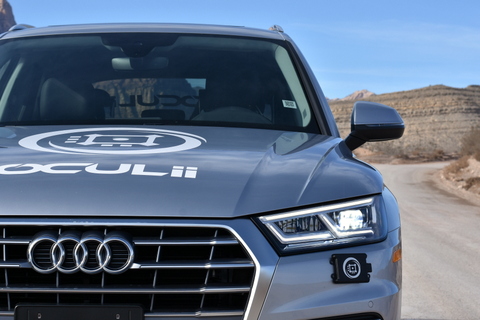Radar Lets Us See the Way To the Future
Story by Steven Hong
The race to get autonomous vehicles (AVs) safely to market is tighter than ever, and the battle is now between software and hardware improvements.
While many companies have bet on lidar, there’s still a lot of road to cover to get this hardware technology into consumer vehicles at a price point that vehicle manufacturers and consumers will tolerate.
At the same time, radar has emerged as a market-proven solution that can be enhanced with smart software that has the potential to deliver better visibility at a far lower cost than competitive hardware solutions–and I believe this is the path that will help get better, safer AVs to market faster.
Smart Software Improves Faster than Hardware
To explain how intelligent radar works, let’s look at the innovation that directly preceded it. Starting from 2012, software drove tremendous innovation in how we use camera sensors. Deep learning software enabled computers to extract significantly more information from the same sensor hardware, enabling the proliferation of camera based perception across a variety of autonomous applications.
These innovations in camera use were made on the same types of cameras we’d been using for 30 years. The radar technology we adapt today has been around even longer, and it has an even stronger record of use in consumer vehicles. Rather than moving to a new hardware solution, there’s an opportunity to move the auto industry forward even faster by picking the more rapidly evolving tech: the one that’s built on code and driven by machine learning.
Today, this same AI-driven software approach is being used to significantly amplify the performance of existing radar hardware, unlocking a broad range of improvements including superior resolution, longer range, and higher sensitivities. All of these capabilities are now available on market-proven radar hardware–ready to complement the drawbacks associated with camera-based perception, such as degradation in poor lighting conditions and limitations in range.
Adaptive Machine Learning Will Accelerate Safe, Autonomous Transportation
Until recently, the best way to improve the resolution of radar technology was to add more antennas, which was both costly and cumbersome.
By supplementing radar sensors’ abilities with smart software, you can keep the cost of your hardware down and get an added benefit that comes with this technology, known as Moore’s Law. Historically, as processing power and speed double every two years, this smart software solution will continue to improve the use of radar for the navigation of autonomous vehicles.
At Oculii, our core tech is software, and it’s a critical component in developing safe AVs. By leveraging machine learning to improve how we use radar for navigation, we won’t face the same design and supply chain challenges of those adding lidar to passenger vehicles.
There’s beauty in layering machine learning on top of proven radar hardware. It is:
Road-tested, robust and able to perform in all weather conditions
Cost-effective, especially when compared to lidar and camera-based options
Low impact, as radar sensors don’t significantly impact a vehicle’s energy budget
And it keeps improving. We don’t yet know how the lidar will hold up as the first generations of AVs age, but we do know that radar sensors can stand the test of time and extreme weather. By betting on the future of AI-powered software, the industry can ensure that it’s headed for a future in which self-driving cars are safer and designed for constant improvement.
More on Self-Driving Car Tech
Tech: Autonomous Vehicles Are Going To Need a New Brain
News: Autonomous Driving Evolves in Vegas
The post Opinion: Why Software Is the Key to Developing Safe Autonomous Vehicles first appeared on Clean Fleet Report.
Source: Clean Fleet Report
Read More
